MARKERS
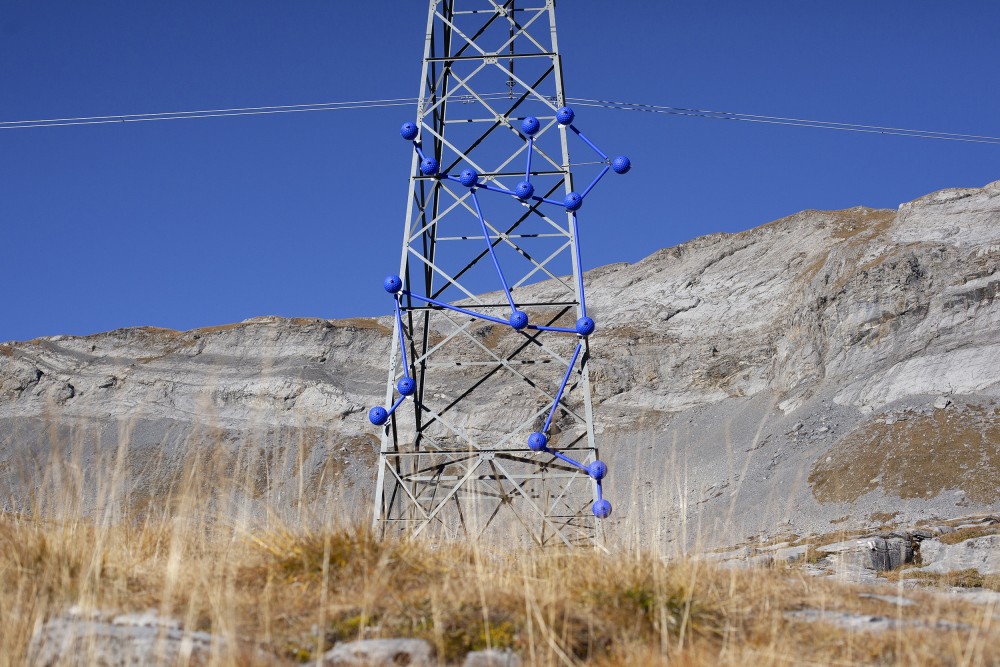
Date
Dimensions
Material
Supported by
Location
Description
MARKERS is a monumental 17-meter-high sculpture installed on a high-voltage power line pylon — a first in Switzerland. Drawing on the aesthetics of the digital world and the algorithmic vision of machines, the work functions as an assisted ready-made, composed of recycled aerial marker balls. It draws attention to two crucial issues: energy supply and the impact of infrastructure on the natural landscape.
Presented as part of the exhibition PASSAGE, curated by Peter Erismann and Beate Engel in collaboration with the Cultural Commission of the Swiss Alpine Club (SAC), the sculpture is one of several site-specific works exploring the relationship between humans and nature in the age of climate crisis, while also addressing the challenges of sustainable tourism.
The exhibition is located on the Gemmi Pass (Leuk, VS, Switzerland), along a strategic power line connecting Chippis (Valais) to Bickigen (Bern) — a vital link for Europe’s energy network. These high-voltage pylons, both striking and imposing, appear as disruptive elements in an otherwise romantic landscape, while also echoing the original purpose of a mountain pass: to enable the movement of essential goods from one side to the other.
On one of these pylons, nearly 60 meters high, stands the sculpture in the form of a human figure climbing. Is it a mountaineer — a symbol of Swiss alpine tradition — or a technician at work, representing a profession essential to energy supply? This ambiguity invites viewers to reflect on the role of such infrastructure in our daily lives, and on its integration into the landscape.
The sculpture is made of metal rods, PVC tubing, and aerial marker spheres — the same kind typically affixed to power lines for safety reasons. In MARKERS, they have been repainted electric blue, a color evoking the digital markers used in motion tracking and pattern recognition— key elements of today’s digital visual culture. This abstract aesthetic, stemming from an algorithmic vision, reflects how technologies are now permeating even the most remote spaces on earth.
Thus, a purely functional structure is transformed into a space for reflection — between reality and imagination, between function and fiction.
The work is extended through an augmented reality app that visitors can explore on-site using their phones. Through it, other blue giants — symbolizing the flow of electricity — come to life and hike beneath the line toward Kandersteg. The experience is accompanied by an original audio piece: a poetic-techno slam created by the artists.
Exhibition view at PASSAGE
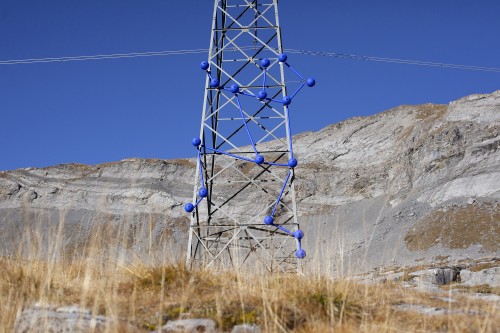
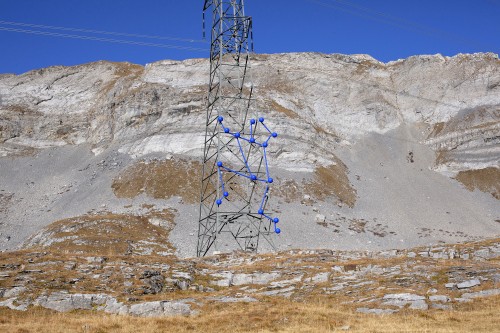
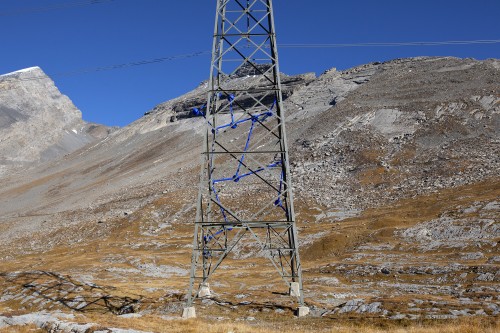
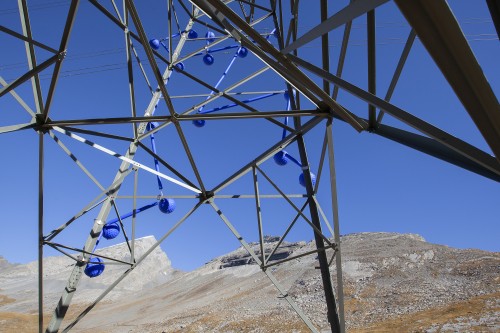
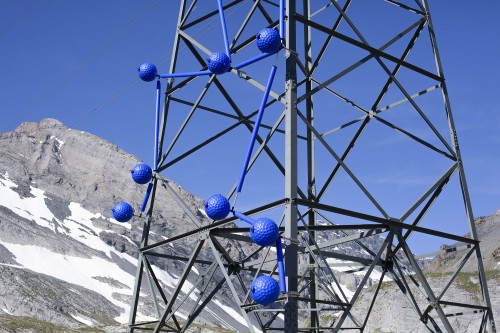
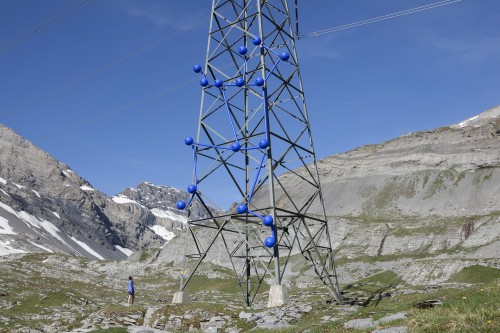
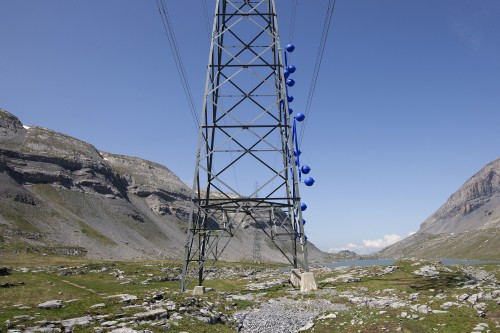
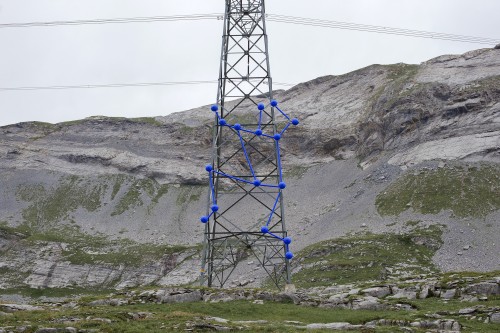
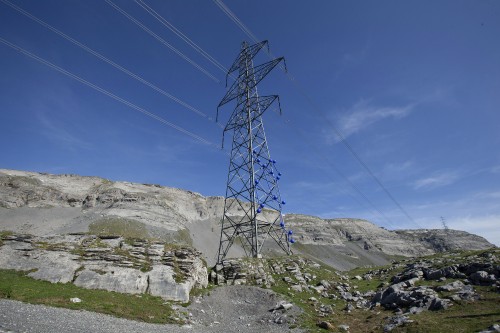
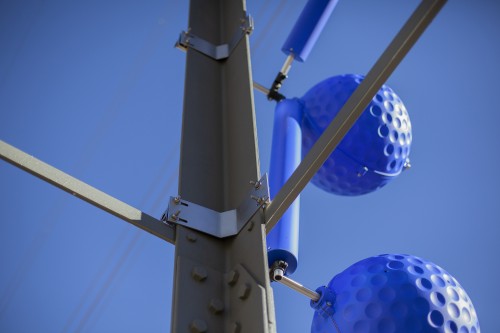
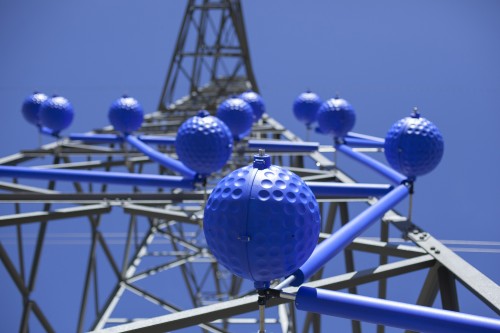
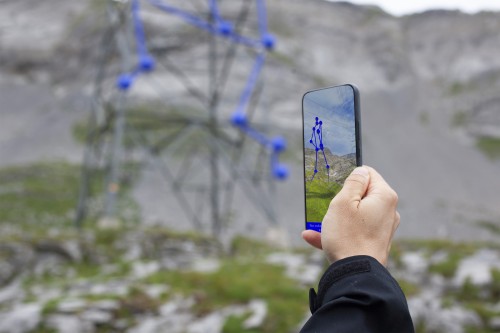
Videos
Exhibitions
Press
Contact
Thanks
Fondation Vaudoise pour la Culture
Swiss Cultural Fund UK
Pro Helvetia
Art Foundation Pax
HeK
Canton de Vaud
Ville de Lausanne
Ville de Renens
Migros pourcent culturel
Arts at CERN
Hospitalité artistique de Saint-François
Swiss Alpine Club SAC
MUDAC
Ars Electronica
Wilde gallery